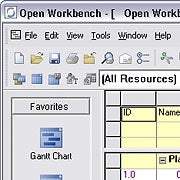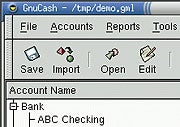It's hard to argue against data portability. After all, who could oppose giving people control over the data they load, publish and store on Web sites?
This is particularly timely now that average users have started feeling the "network fatigue" that comes from maintaining multiple social-networking profiles, e-mail accounts, blogs, address book applications, social-news-sites memberships and the like.
And yet, while it is an important and unquestionably worthy endeavor, data portability faces thorny challenges in areas such as technology, privacy, security, business, and regulation and legislation.
Workgroup Confers, Shares
An informed and articulate discussion of these challenges can be found on the online forum of the DataPortability Workgroup, an organization founded recently to highlight the work that multiple data portability groups have been doing and to create a technical blueprint for vendors to adopt.
While the workgroup has about 50 formal members, anyone can join the discussion forum, which now has more than 700 participants and is the workgroup's main meeting place.
Activity on the forum has been engaging in recent weeks, as people discuss technical and nontechnical issues, offer up suggestions, ask questions, argue and, mostly, cheer each other on in their collective quest for a satisfactory data portability solution.
Almost 80 discussion threads have been started and more than 400 messages posted, as participants ponder issues such as the parameters for user data, what data portability truly means, who owns data already created for a specific site, and whether making data portable is illegal in Europe.
Other threads focus on how to bring together various data portability efforts already under way, like the Friend of a Friend project (FOAF), OpenID, Attention Profiling Mark-up Language (APML), the Liberty Alliance and various open data microformats.
Optimistic about Solutions
Despite the magnitude of the endeavor, participants interviewed feel optimistic that the workgroup will yield concrete results that will bring about industry-wide implementations of data portability solutions.
"Where there is a will, there's a way. And so far it seems like everyone has thrown their will behind the project. Now they need to find a way," said Chris Saad, cofounder of the DataPortability Workgroup, in an e-mail interview.
The DataPortability Workgroup positions itself at a higher conceptual level than the groups working to develop specific technical standards for data portability.
"Our goal is to highlight, not compete [with], the work of other groups, and to encourage the adoption of their work with vendors and users," Saad said.
The workgroup's main accomplishment so far, Saad said, is that it brought people to the table and started to outline the documents it plans to deliver, chief among which will be the DataPortability Technical Blueprint, envisioned as a key reference document for a complete implementation architecture for the data portability stack of standards.
Eager for Answers
John Breslin is a workgroup supporter who sees it as having a lot of synergy with the Semantically-Interlinked Online Communities Project (SIOC), which he founded in 2004 to provide methods for interconnecting discussion services such as blogs, forums and mailing lists to each other.
"SIOC is a data format essentially to describe communities. It has many different possible applications, of which data portability is one," Breslin, a lecturer and researcher at the Digital Enterprise Research Institute of the National University of Ireland in Galway, said in a phone interview.
Victor Coustenoble shares a similar belief. He co-founded with Edwin Taylor the OSocial.net project to let people see their social-networking data in an open, portable way and let them securely build a friends list across site boundaries without the need for new registrations.
"About our participation, we are very interested to implement and use data portability ideas and specifications. It helps us to write applications easily for data management with standards and with a community support, which is very important for us," Coustenoble said in an e-mail interview.
For Devin Holloway, the workgroup could yield historic results. He plans to move from Silicon Valley to Asia to pursue entrepreneurial opportunities where social networks, mobile phones and Internet technologies intersect.
"[Data portability] will pave the way for a future rich in services and applications that harness our aggregate data to help improve our lives, in virtually every aspect. The [workgroup] is onto something that is going to change the world, and I'm excited to be a part of the process," he said in an e-mail interview.
Vendor Interest Minimal
Unfortunately, the enthusiasm, commitment and passion displayed by participants, many of whom are acting as individual volunteers, hasn't so far been replicated by the major Internet players.
While the decisions by Google and Facebook to become members put the workgroup in a news spotlight, their representatives don't seem to have yet participated in the forum discussions. Google and Facebook also declined to have their workgroup representatives be interviewed for this article. Each separately sent a brief, prepared statement saying that they want to participate in the group because they're committed to data portability.
This isn't new. The CEOs of both companies at different times have said that their companies believe in data portability, and yet, neither them nor any other major Internet company can be said to have taken a leadership role in this effort.
"I haven't seen anything convincing from the big Internet companies that illustrates that they want to embrace this wholeheartedly," Breslin said. "These sites haven't really been rushing to make their data portable yet."
"We are yet to see if they are fully committed. So far they have only committed to the conversation," said Saad, who is also CEO of Faraday Media in Australia and cofounder of the APML Workgroup. "That being said, however, it's encouraging to see them take the first few steps in the right direction,"
This isn't a minor point. The DataPortability Workgroup and the other technical organizations could come up with fantastic solutions, but if the major Internet players -- and in particular the major social-networking sites -- don't adopt them, data portability will not become a reality for end-users. MySpace, Friendster, LinkedIn and Bebo did not reply to requests for comment for this story.
Portable or Piracy?
Maybe these Internet companies aren't truly convinced that data portability will be good for their businesses. In what some viewed as an example of words being inconsistent with actions, Facebook recently booted from its social network the well-known technology blogger Robert Scoble.
Scoble's crime? He exported his contacts data in his Facebook account over to Plaxo's address book management service, Pulse. No can do, Facebook said, explaining that Plaxo's tool violated Facebook's terms of service and posed a security risk because it "scraped" the data from the social network. Scoble's account was later reinstated, but under the condition he doesn't do this again.
If you operate a social-networking site -- or any site where people create an account or profile, list contacts and post content -- a way to discourage them from switching to a competitor is to make it hard or impossible for them to easily export and reuse that data elsewhere.
Yet, proponents of data portability like Saad say that things are starting to change, and that Facebook, MySpace, Google and others need to wise up if they don't want to fall into disfavor with their users.
What has changed is that these "social" sites have reached mainstream status, and a critical mass of users have realized the inconvenience of having to reenter and update a lot of the same information and content in multiple "social" sites and applications.
"As more and more applications start to feel the impact of social features, users will begin to demand a data portability solution. Either that or network fatigue will reduce adoption and eventually kill the fun," Saad said.
For example, a concrete result of data portability could be a console-like management application where a person could manage his address book contacts, photos, videos, social news entries, social bookmarks and blog posts. With that application, the user would be able to share data between multiple social applications, sites and services.
Unlike other vendors, Plaxo is heavily involved in data portability discussions and efforts, precisely because its Pulse service has been designed to help people manage their dispersed contacts data across address books, sites and e-mail accounts.
"By making data portable, you're enabling all these tools to work together. The user can be the hub and the different services can be spokes. That's what we're pushing for: users in control of the data and interoperability among the services," said Joseph Smarr, Plaxo's chief platform architect.
Proprietary vs. Portable
Ultimately, the problem represents an opportunity for Internet companies. "In the end, whoever moves first to be truly open will have the advantage," Saad said.
J. Trent Adams, founder and chief innovator at Matchmine, another vendor pushing for data portability, concurs. A stealthy startup could develop a clever application or service built on data portability standards and force other vendors to respond. "All of a sudden it's the right idea, and the big boys will have to react," Adams said.
In other words, Internet companies who insist on locking up their users' data to protect their businesses might soon find themselves instead stuck in the mud.








